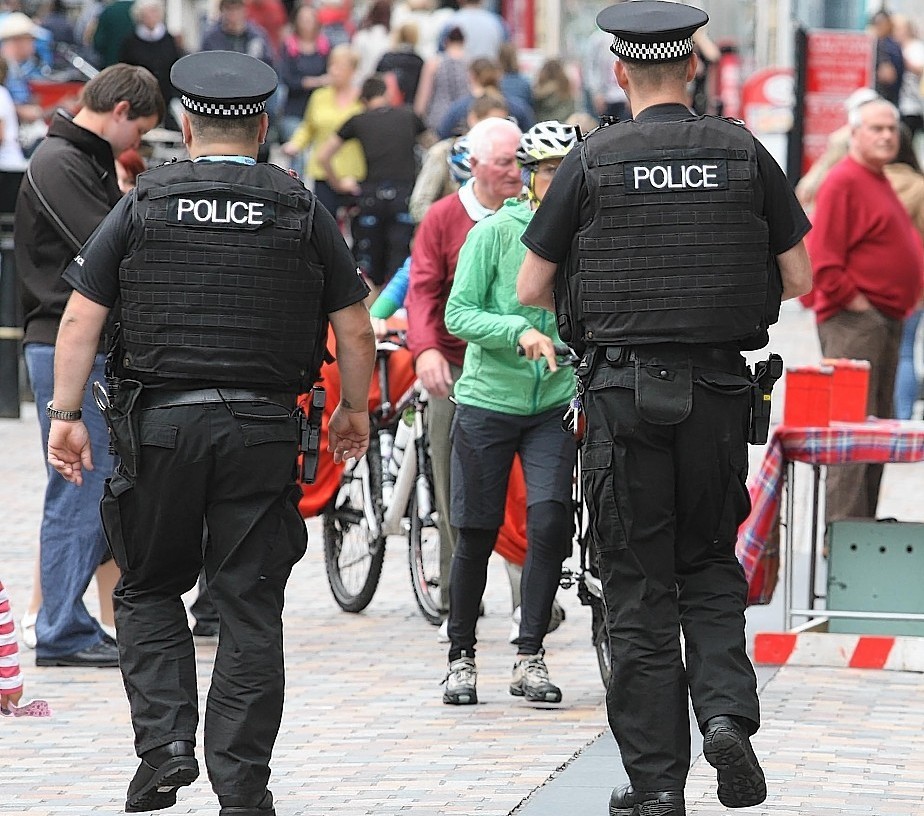Police will no longer carry holstered pistols on routine patrols in the Highlands after a dramatic climbdown by Scotland’s chief constable on the controversial issue.
The force bowed to political pressure yesterday and announced armed officers will now only be deployed to incidents involving guns or where there is a danger to life.
Police Scotland said they decided to remove members of firearms units from routine duties after listening to widespread public concern.
But the recently increased terrorism threat across the UK also contributed to the decision.
Chief Constable Sir Stephen House and other senior figures wanted firearms officers freed-up to be ready to deal with the heightened security status.
The U-turn was revealed in Inverness by Assistant Chief Constable Bernard Higgins, who told councillors he was frustrated that he could not disclose the secret intelligence used to decide the threat level in Scotland.
And he said one solution was to vet some councillors to allow them access to the sensitive information.
The policy change was confirmed just days after firearms officers were flown to Shetland amid reports about a man carrying a rifle and armed police attended a robbery at a betting shop in Inverness.
There was also a recent incident in Dingwall involving a man who threatened a woman with a knife and claimed he had explosives.
Mr Higgins denied that the force had performed a U-turn, saying that was an “absurd” suggestion.
But the climbdown was widely welcomed in the north – where many politicians have voiced unease about officers patrolling with Glock pistols on their hips.
MSP John Finnie, who was the first to express concern, said: “It is a great relief that armed police officers will no longer be seen on our streets dealing with routine police business as this was having a negative impact on community relations.”
Mr Finnie, a former police officer, said people should still contribute to the Scottish Police Authority’s consultation on firearms.
He added: “We still need to understand how this significant change, thankfully reversed, happened in the first place.
“In the meantime, credit to Police Scotland for getting their guns off our streets.”
North MP Danny Alexander said: “This is great news for thousands of Highlanders who backed the campaign to get this policy reversed.
“It’s been good to work with John Finnie and others on a cross-party basis to secure this change.
“Serious concerns raised by the public about the SNP’s armed police policy are finally being addressed.
“Highlanders do not want armed officers patrolling our streets, but for too long the justice secretary refused to listen. His armed police policy was illiberal, unwarranted and baseless.”
Mr Higgins, who has responsibility for firearms policy, said in Inverness that after his review, his “compelling conclusion” was that “every part of the country” was affected by the threat of firearms.
He added that the UK terrorism threat level increased last month and as a consequence he recommended that armed officers should not be deployed on non-firearms-related incidents.
He said this would ensure they could react immediately to more serious events.
However, he added that Sir Stephen had gone a step further and made this aspect permanent because of public concerns.
He said that the decision “demonstrates a willingness to listen to the public and actively address the concerns”.
But Mr Higgins said that the issue of the weapons being visible was “more tricky to resolve” and work had started to examine alternative holsters to ensure the guns were carried more discreetly.
He stressed that no decisions had been taken and there would be training implications for the force depending on which holster was selected.
